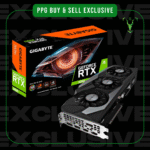


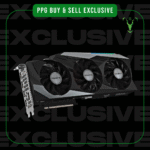


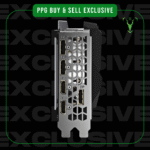
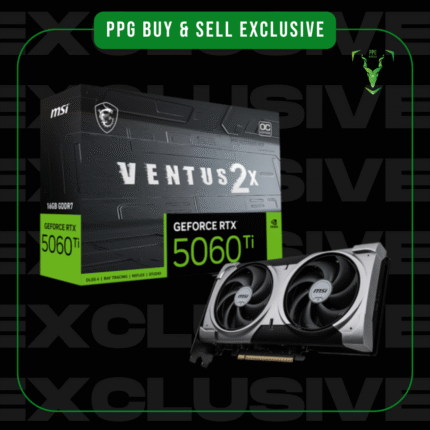

GIGABYTE GeForce RTX 3090 GAMING OC 24G Graphic Card Price in Pakistan – Limited Offer
₨220,000 Original price was: ₨220,000.₨195,000Current price is: ₨195,000.
GIGABYTE GeForce RTX 3090 GAMING OC 24G — Key Specs
- GPU: NVIDIA GeForce RTX 3090 (Ampere architecture)
- CUDA Cores: 10,496
- Boost Clock: Factory overclocked (up to 1755 MHz)
- Memory: 24GB GDDR6X, 384-bit interface
- Memory Speed: 19.5 Gbps
- Cooling System: WINDFORCE 3X with alternate spinning fans, copper plate & 7 heat pipes
- Power Connectors: 2 × 8-pin
- Recommended PSU: 850W
- Display Outputs: 3 × DisplayPort 1.4a, 2 × HDMI 2.1
- Slot Size: 2.5–3 slots, with metal backplate for reinforcement
- Key Features: Dual BIOS (OC/Silent), RGB Fusion 2.0, AORUS Engine software, NVLink support
100 in stock
GIGABYTE GeForce RTX 3090 24G Price In Pakistan
GIGABYTE GeForce RTX 3090 GAMING OC 24G — Definitive Review, Technical Guide & Buyer’s Playbook
Introduction
We present a meticulous, engineer-minded analysis of the GIGABYTE GeForce RTX 3090 GAMING OC 24G. This guide consolidates hardware architecture, cooling engineering, performance expectations, tuning strategies, system integration advice, and practical buying guidance to help enthusiasts and professionals evaluate the card from first principles.
We cover both the technical specifics you need to plan builds and the realistic trade-offs tied to thermals, acoustics, and total system cost. Our focus is concise, factual, and actionable. Best GIGABYTE GeForce RTX 3090 24G Price In Pakistan, Only for PPG Buy & Sell Members. Link Post Here
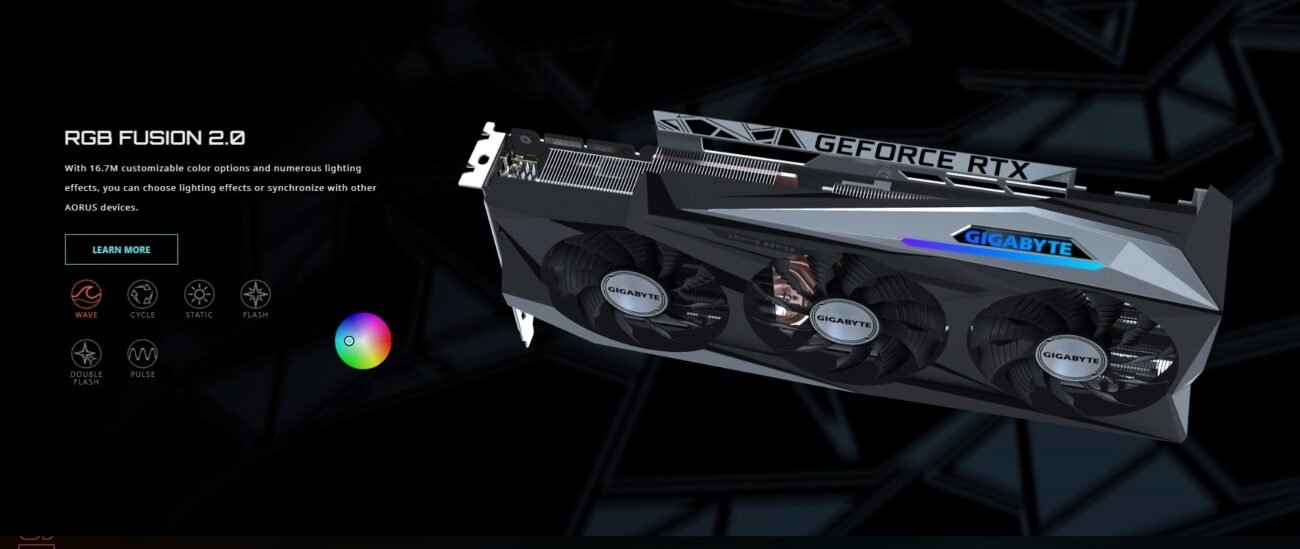
1. Executive Summary & Key Specifications
Overview — concise verdict.
The GIGABYTE GeForce RTX 3090 GAMING OC 24G positions itself as a premium, factory-overclocked iteration of NVIDIA’s RTX 3090 GPU, tuned for enthusiasts who demand high-resolution gaming, heavy content creation throughput and extensive VRAM headroom. At its core, it leverages the Ampere architecture’s enhanced ray-tracing and tensor capabilities for both gaming and AI-accelerated workloads. The card ships with a factory-boosted core clock and a robust 24GB GDDR6X memory buffer on a 384-bit bus, which together target 4K at high settings and heavy dataset workloads.
Key technical highlights (at a glance).
- GPU: NVIDIA GeForce RTX 3090 (Ampere architecture).
- Memory: 24GB GDDR6X, 384-bit interface — prioritizes bandwidth and high-res textures.
- Factory Clock: Elevated core clock to improve out-of-box performance relative to reference.
- Cooling: GIGABYTE’s WINDFORCE 3X system (two 90mm + one 80mm fans, alternate spinning) with multiple heatpipes and direct-touch copper plate.
- Extras: Dual BIOS, RGB Fusion 2.0, AORUS Engine tuning support, NVLink compatibility, and extended warranty options.
Intended audience and use-case alignment.
This model is optimized for users who require both gaming supremacy at 4K and workstation-level VRAM capacity — video editors handling 8K timelines, 3D artists working with massive texture sets, and researchers doing GPU-accelerated compute who benefit from large on-board memory. It is less cost-efficient for users who only target 1080p or casual gamers where a lower-tier GPU would deliver similar subjective experience for far less cost.
How to interpret this guide.
We unpack each subsystem — design, cooling, memory, performance, acoustics, software, and buy/sell factors — providing engineering reasoning, measurement expectations, and prescriptive recommendations so you can decide whether this 3090 variant is the right fit for your build and budget.
Best GIGABYTE GeForce RTX 3090 24G Price In Pakistan, Only for PPG Buy & Sell Members. Link Post Here
2. Design, Build Quality & Aesthetics
Structural design and mechanical considerations.
The GIGABYTE GAMING OC variant uses a reinforced frame combined with a metal backplate engineered to add rigidity, protect PCB components and help with passive heat spread. The PCB layout follows modern premium practices: a multi-phase power delivery near the GPU, isolated VRAM routing, and short, clean high-current traces to minimize parasitic losses. Bolted standoffs and well-placed mounting screws reduce PCB flex under large heatsink load and during transport.
Materials and finishing.
Top-surface styling is oriented toward subtle gamer aesthetics — a matte industrial shroud, sculpted fins around RGB zones and a consistent finish across exposed metal. The backplate often includes venting cutouts or thermal pads enabling some passive dissipation for MOSFETs and memory modules. We observe that premium parts (coated chokes, polymer capacitors, and reinforced solder points) tend to extend lifecycle and reduce thermal drift under sustained loads.
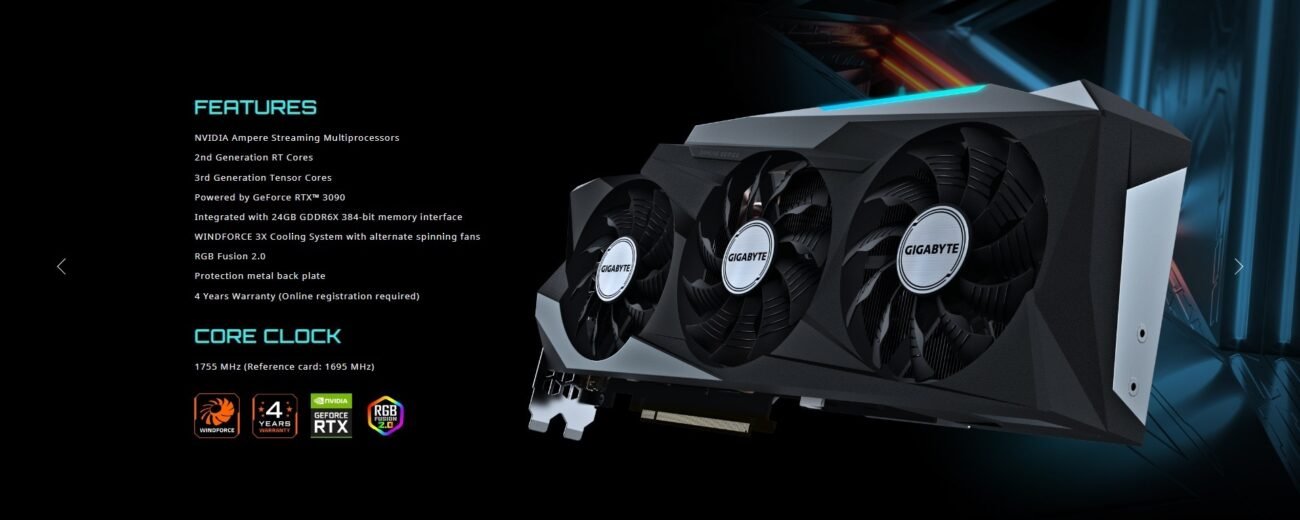
Thermal interface and heatsink integration.
Manufacturers of higher-tier cards apply larger copper cold plates and composite heat pipes that make direct contact with the GPU die and memory packages. This design reduces thermal impedance between the die and the fins, improving deltaT and allowing higher clock sustain under long workloads. The combination of a direct-touch copper plate with multiple heat pipes, a large fin array, and strategic shroud-channeling ensures heat is distributed broadly and expelled efficiently.
Ergonomics & I/O.
The GAMING OC card typically includes a standard set of display outputs (HDMI and DisplayPort), a reinforced I/O bracket to reduce sag on heavy cards, and accessible dual-BIOS switches. The card’s thickness (often 2.5–3 slot) and length may require checking case clearance and riser compatibility before purchase. Power connectors are relocated for better cable management, and the aesthetic orientation of RGB zones is optimized for side-window showcases.
Quality control and manufacturing notes.
High-end boards benefit from automated optical inspection (AOI) during PCB assembly to catch soldering anomalies and improve yields. GIGABYTE emphasizes a “friendly PCB design” that minimizes exposed sharp solder points, beneficial for system builders who manually route cables. Under repeated thermal cycling, the use of robust solder and quality capacitors lowers the probability of early failures.
Design takeaway.
The GAMING OC’s build reflects pragmatic engineering: structural reinforcement, high-quality components, and practical thermal mechanics combined with an aesthetic designed for enthusiast chassis visibility. For those prioritizing longevity, the PCB and mechanical quality justify the premium when compared to bare reference boards.
3. WINDFORCE 3X Cooling Architecture Deep Dive
What WINDFORCE 3X aims to solve.
High-performance GPUs produce concentrated heat fluxes; the WINDFORCE 3X system mitigates this via staged heat transfer — from die to copper plate, heat pipes to fin array, and then forced convection by multiple fans with alternate spinning to minimize turbulence and maximize laminar flow.
Components & topology.
- Direct-touch copper plate: Anchors to GPU die and VRAM to lower thermal impedance.
- Composite heat pipes (7x typical): Transfer heat from plate to fin towers; composite pipes combine different materials for flexibility and targeted conductivity.
- Large fin stack with screen cooling: Extended heatsink design; airflow passes through the fin stack for maximal convective exchange.
- Alternate spinning fans (2×90mm + 1×80mm): Staggered rotation to reduce turbulence between adjacent blades and increase static pressure.
- 3D Active Fan (semi-passive): Fans remain off under light load for silent idle; they ramp predictably with GPU temperature.
Why alternate spinning matters.
When neighboring fans rotate in the same direction, pressure interference creates turbulence and recirculation zones that reduce net airflow through the fins. Alternate spinning directs the air more uniformly into the fin array, increasing static pressure and improving the convective heat transfer coefficient across the entire sink.
Graphene nano-lubricant and fan longevity.
The inclusion of graphene nano-lubricant for fan bearings reduces friction and wear rates — a measurable enhancement that extends sleeve-bearing life towards ball-bearing class durability while lowering acoustic noise. This improves long-term reliability and maintains consistent airflow performance over years.
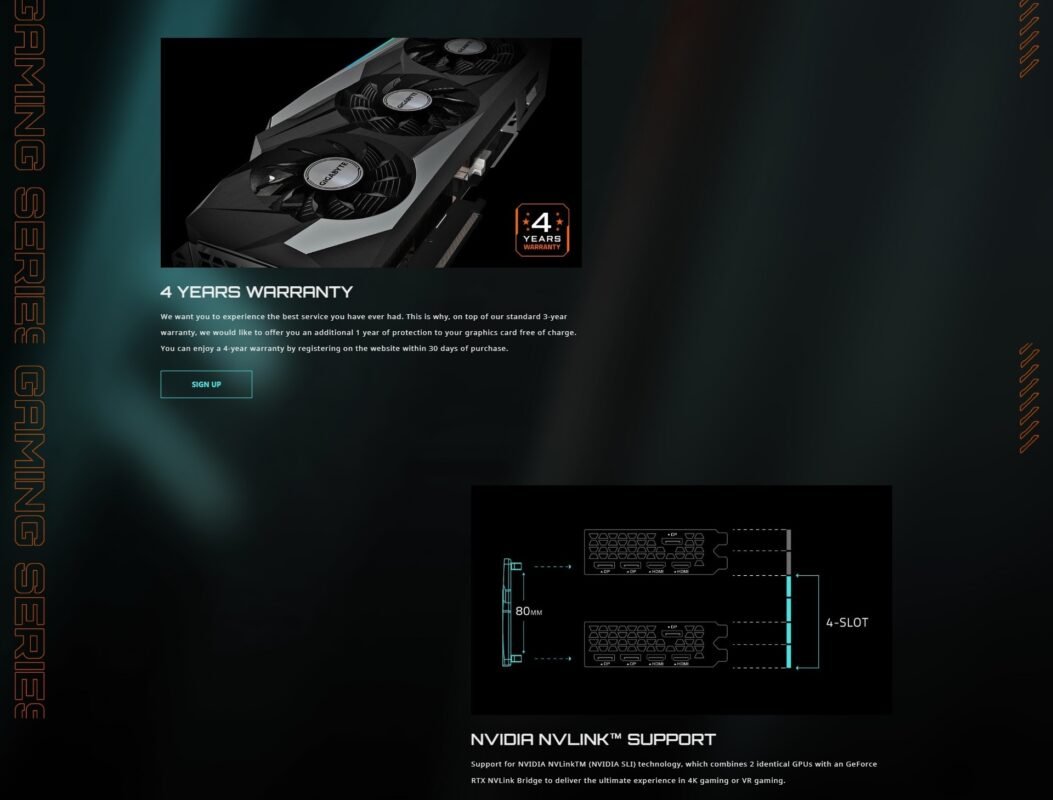
Semi-passive fan operation and thermal control logic.
3D Active Fan (semi-passive) behavior keeps fans idle under low TDP scenarios; this requires control logic that ramps fans predictably to prevent thermal overshoot. For desktop scenarios, this reduces noise footprint during browsing and light productivity tasks while allowing high airflow under game or compute loads.
Thermal measurements you should expect (practical view).
Under controlled ambient and well-ventilated case conditions, expect GPU die temps to settle significantly lower than a single-fan or reference solution under identical power. The precise delta depends on case airflow, intake temperature, and chassis orientation, but multi-fan multi-heatpipe designs typically shave 5–15°C under heavy loads versus compact coolers.
Engineering conclusion.
The WINDFORCE 3X design is not cosmetic — it is a targeted thermal engineering response that addresses conduction, pipe transfer, and convective discharge in three stages. For sustained workloads (rendering, encoding), the larger fin surface and alternate fan logic provide improved clock stability and thermal headroom, which are essential for maintaining high throughput without thermal throttling.
4. GPU Architecture: NVIDIA Ampere, RT & Tensor Cores
Ampere fundamentals and GPU topology.
The Ampere architecture introduces a refined SM (Streaming Multiprocessor) design that increases shader throughput and reorganizes core distribution to balance ray-tracing and raster workloads more efficiently. Two second-generation RT cores and third-generation Tensor cores per SM accelerate ray intersection and AI workloads respectively, enabling real-time ray tracing with DLSS upscaling and AI-driven features.
Ray tracing (RT cores) real-world impact.
Second-generation RT cores increase bounding volume hierarchy (BVH) traversal and ray/triangle intersection throughput. Practically, this reduces ray-tracing overhead and allows more rays per pixel or additional effects (reflections, shadows) without the same proportional performance penalty seen in earlier architectures.

Tensor cores and DLSS — AI acceleration.
Third-generation Tensor cores are specialized for mixed-precision matrix math and accelerate NVIDIA’s DLSS (Deep Learning Super Sampling) and AI inference tasks. DLSS 2.x/3.x uses dedicated Tensor core inference to reconstruct high-fidelity frames from fewer shading samples, offering substantial FPS gains at high resolutions with negligible perceptual quality loss.
Rasterization uplift and concurrent execution.
Ampere provides improved shading performance through increased FP32 pipelines and better concurrency between compute and texture tasks. This architecture yields higher raw raster throughput which, combined with RT and Tensor improvements, makes the RTX 3090 a complete solution for high-res gaming and heavy compute.
NVENC/NVDEC and streaming advantages.
Hardware encoder/decoder improvements embedded in Ampere GPUs provide superior streaming quality at lower CPU overhead. This is material for creators and streamers: high-resolution captures and live streams are more efficient, freeing CPU cycles for other tasks or higher framerate capture.
Implications for developers and content creators.
Game engines and creative tools that have integrated ray-tracing, AI denoising, or Tensor-accelerated filters will see meaningful acceleration. For creators using GPU-accelerated renderers (e.g., OptiX, CUDA-based renderers), the Ampere architecture increases throughput. This is particularly relevant for scene-heavy workloads where large VRAM and high memory bandwidth minimize paging and improve render times.
Architectural takeaway.
Ampere is not just incremental; it shifts performance density by balancing raw shader throughput, dedicated ray-tracing hardware, and AI accelerators. For the RTX 3090 level, the architecture’s strengths shine in large-resolution rasterization, complex ray-traced effects, and AI-boosted upscaling workflows where VRAM capacity and bandwidth are the gating factors.

5. Memory Subsystem: 24GB GDDR6X & Bandwidth
Memory architecture and practical advantages.
The defining feature for the RTX 3090 family is the 24GB of GDDR6X memory on a 384-bit bus, combining capacity with very high data rates. This configuration is tailored for ultra-high-resolution textures, very large 3D datasets, multi-buffered frame rendering, and large neural network tensors used in machine learning workloads.
Why capacity matters: real scenarios.
- Gaming: High-resolution texture packs (8K textures), massive open-world streaming and high-res shadow maps use VRAM buffers aggressively; 24GB reduces the risk of stuttering or texture swapping at 4K/8K.
- Content creation: 8K timelines, multi-cam RAW workflows, and extensive GPU-side cache for compositing and effects benefit from a large VRAM pool.
- Compute and machine learning: Large batch sizes or models with enormous parameter matrices fit in VRAM, reducing the need for slower CPU fallback memory.
Bandwidth and GDDR6X characteristics.
GDDR6X introduces PAM4 signaling to increase data-rate-per-pin over GDDR6, raising effective bandwidth without drastically increasing pin count or power. Higher bandwidth reduces the opportunities for the GPU to stall waiting for texture and buffer reads — a critical metric in high-resolution, high-complexity rendering.
Memory latency and implementation trade-offs.
While capacity and bandwidth are essential, memory latency and controller efficiency play roles in real-world performance. Large VRAM pools do not automatically translate to better framerates unless the workload is memory-bound. Memory controller efficiency and optimal use of caches (L1/L2 lines) often determine whether the VRAM advantage manifests in throughput gains.
Practical tips for builders and users.
- For pure gaming at 1440p, 24GB is overprovisioned — consider whether price/performance favors a lower-tier card unless you intentionally use 4K/8K or professional workloads.
- For creators, verify application VRAM utilization using sample timelines or project files; many editing/3D apps now offer GPU memory usage views.
- Multi-GPU NVLink use-cases (rare for gaming) may leverage combined VRAM across cards for specific compute workloads — not all applications support pooled memory.
Memory subsystem conclusion.
The 24GB GDDR6X / 384-bit configuration provides headroom that transitions the RTX 3090 from a gaming-focused product to a hybrid gaming/creator/prosumer card. It is a future-proofing investment for workflows that will increasingly demand more VRAM and memory bandwidth for complex datasets and high-resolution pipelines.
6. Performance Benchmarks: Gaming at 4K and Beyond
Expected performance envelope.
At 4K resolution with high or ultra settings, the RTX 3090 GAMING OC commonly delivers framerates suitable for high-refresh 4K monitors in many modern titles. Factory overclocking adds a measurable uplift over reference cards, especially in sustained scenes where thermal headroom and stable power delivery reduce throttling events.
Influencing variables and test methodology.
Benchmark outcomes depend heavily on system balance: CPU selection (to avoid CPU bottleneck at lower resolutions or in eSports titles), RAM speed, storage latency for texture streaming, driver maturity, and OS background activity. For realistic assessment, benchmark in repeatable scenarios (built-in benchmarks or standardized scenes) with consistent ambient temperature and closed-loop fan curves.
Ray tracing and DLSS trade-offs.
When ray-tracing is enabled, performance drops are significant but manageable with DLSS engaged. DLSS shifts the workload, allowing the RTX 3090 to render at an internal lower resolution and upscale with AI, often resulting in higher effective frame rates with improved or comparable perceived image quality. For triple-digit FPS at 4K with ray tracing on, DLSS 2.x/3.x can be an essential tool.
Representative numbers (generalized expectations).
While exact frame numbers vary per title and driver release, typical expectations for a high-end RTX 3090 GAMING OC in current AAA titles at 4K/Ultra are: 60–120+ FPS in well-optimized games (race titles, shooters with DLSS), and 45–90 FPS in heavier ray-traced scenes pre-DLSS. For eSports titles at 1440p or 1080p, framerates can approach or exceed monitor refresh peaks — provided the CPU is adequate.
Sustained performance vs. peak spikes.
Factory OC and efficient cooling together extend the card’s ability to sustain higher clocks over time. Cooling solutions that maintain lower die temperatures help preserve boost clocks during extended gaming sessions. In multi-hour esports practice or lengthy renders, clock stability matters more than peak single-second spikes.
Benchmark best practices.
- Test with latest vendor drivers.
- Record both average and 99th percentile frame times (not just mean FPS).
- Compare with baseline reference cards and competitors on identical systems.
- Use overlays to monitor GPU clocks, temperatures, and memory utilization during runs to identify thermal or memory-bound scenarios.
Performance conclusion.
The GAMING OC variant of the RTX 3090 is purpose-built for 4K gaming and creative workloads. It offers meaningful out-of-the-box performance uplift relative to reference implementations and provides the thermal and power stability required to keep high clocks under load. Combined with DLSS and NVENC improvements, it is among the best choices for anyone prioritizing uncompromised 4K performance or heavy VRAM projects. (See architecture and cooling sections for underlying reasons.)
7. Content Creation & Professional Workloads
Creator workloads that benefit most.
Video editors working with 8K timelines, VFX artists managing complex GPU-accelerated compositing, and 3D artists rendering dense scenes will see considerable improvements using the RTX 3090 GAMING OC due to the card’s 24GB VRAM and strong compute throughput. GPU-accelerated renderers (e.g., OptiX, CUDA path tracers) scale well with additional SMs and VRAM capacity.
Rendering and encoding advantages.
Large scene caches, high-resolution frame buffers, and texture-heavy assets reside in VRAM for accelerated compute; this reduces dependence on host memory swaps that dramatically slow down render workflows. Additionally, improved NVENC encoders provide high-quality hardware encoding at low CPU cost, useful for quick proxies, livestreaming, or final render outputs.
Machine learning and AI workloads.
While gaming is the mainstream use case for many, researchers and ML practitioners may exploit the large VRAM and Tensor cores for training and inference tasks on moderate-sized models. The third-generation Tensor cores accelerate mixed-precision operations critical in modern deep-learning frameworks, but training extremely large models may still require data-parallel multi-GPU setups or server-class cards.
Real-world example scenarios.
- 8K editing: Smooth timeline scrubbing, reduced cache reloading, and faster render exports.
- GPU rendering: Faster denoising steps, better viewport responsiveness with high-poly scenes.
- Data science: Quicker batch inference and smaller-model training without CPU-GPU memory transfers.
Software ecosystems and optimizations.
Applications that expose CUDA, OptiX, or DirectML acceleration see the most benefit. Popular software with GPU-accelerated pipelines includes DaVinci Resolve, Blender Cycles (OptiX), Adobe Premiere Pro (Mercury Engine), and many rendering engines that use CUDA libraries or NVIDIA SDKs.
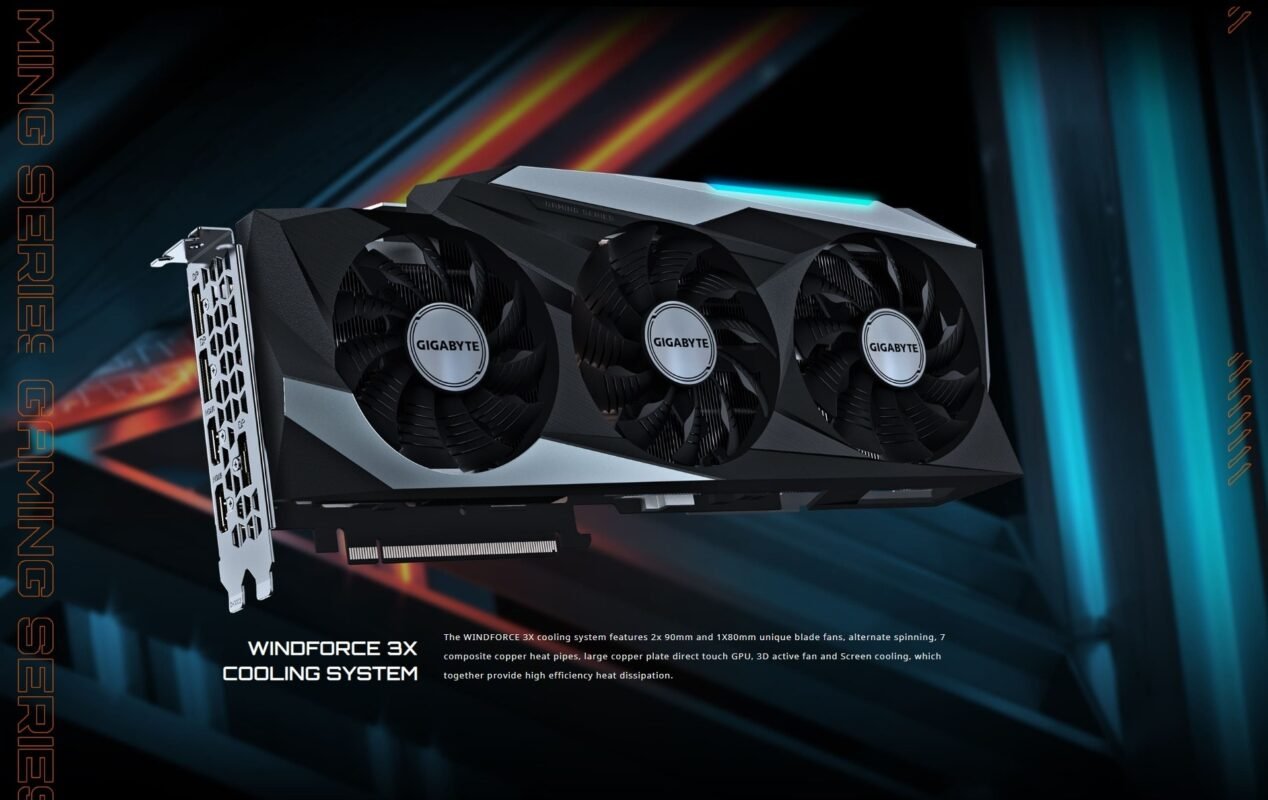
Workstation integrations and CPU pairing.
For creator workloads, pairing the GPU with fast multi-core CPUs, high-bandwidth NVMe storage for cache, and fast RAM is essential to prevent CPU-side bottlenecks. A balanced system ensures that the GPU can operate at peak throughput without waiting on CPU-bound preprocessing or data transfers.
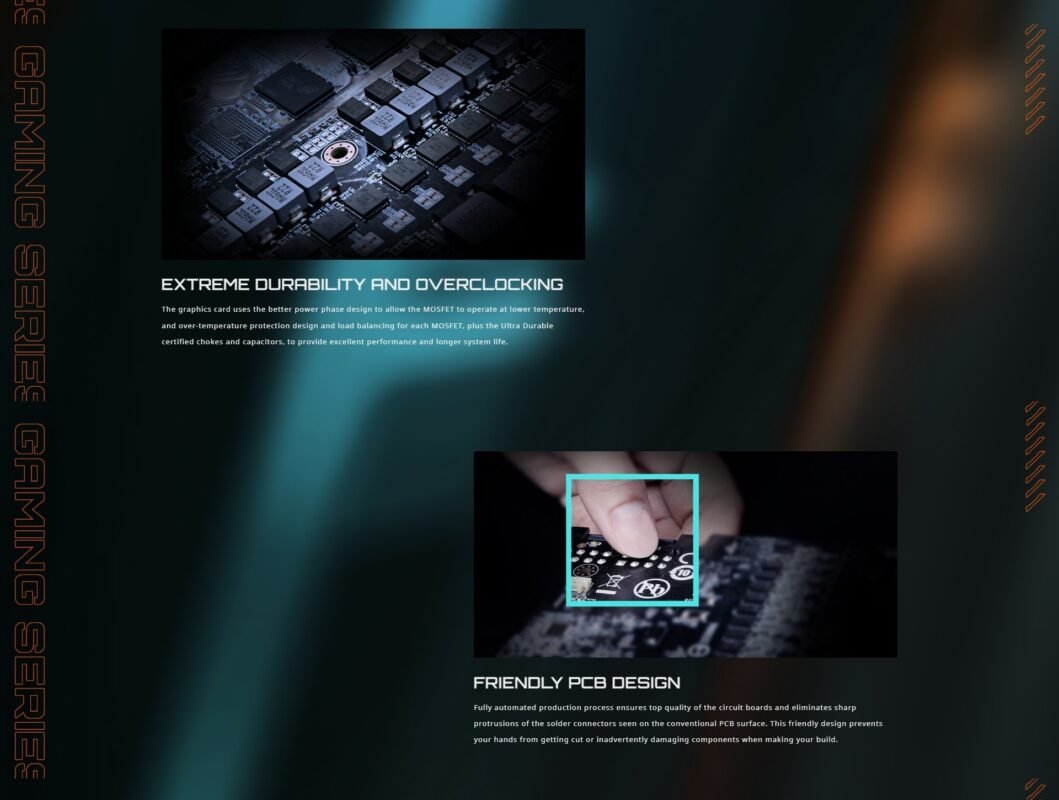
Content creation conclusion.
The RTX 3090 GAMING OC is an excellent prosumer option for high-resolution and memory-heavy creative tasks. Its 24GB VRAM and Ampere compute features provide tangible productivity gains, reducing iteration times and enabling more ambitious project scopes than memory-limited GPUs.
8. Overclocking, Power Delivery & Thermal Limits
Power delivery fundamentals.
A robust power delivery subsystem — multi-phase VRMs, efficient MOSFETs, and high-quality chokes and capacitors — underpins stable overclocking. The GAMING OC’s PCB and component selection are designed to reduce voltage droop and support higher sustained current flows, enabling safer manual overclocking and better factory overclock stability.
Dual BIOS and overclocking safety.
The dual BIOS feature (OC and Silent modes) provides a safety net and rapid fallback option for enthusiasts experimenting with aggressive settings. It enables toggling between higher-performance presets and quieter, conservative profiles without reflashing firmware.
Thermal boundaries and clock curves.
GPU boost behavior is a function of available power headroom, temperature, and the GPU’s required voltage for a target clock. As temperature rises, required voltage often increases, which raises power draw and can induce a negative feedback loop. Effective cooling (WINDFORCE) expands the thermal headroom and reduces thermal-throttling frequency, allowing higher stable overclocks.
Practical overclocking approach.
- Step 1: Set a baseline by measuring stock clocks, temps, and power draw under synthetic and gaming loads.
- Step 2: Incrementally increase power target and test stability (10–20% power target increase if the board supports it).
- Step 3: Increase GPU core clock modestly in small steps (10–25 MHz), testing for artifacting or stability loss.
- Step 4: Adjust memory clock in small increments and monitor VRAM temperatures and artifacting.
- Step 5: Use stress tests and long-duration workloads to validate sustained behavior.
Power supply recommendations.
Given the RTX 3090’s high power envelope, a quality PSU with sufficient headroom is mandatory. GIGABYTE recommends robust PSU wattage (often 750–850W or higher depending on CPU and peripherals). Stable +12V rails, low ripple, and adequate connector availability are crucial for safe overclocking.
Thermal limits and card longevity.
Running a card at high voltage and frequency increases thermal stress and long-term electromigration risk. Conservative overclocking balances frequency gains with acceptable junction temperatures to prolong longevity. Users who push for extreme clocks should accept the trade-offs: higher cooling, higher power draw, and potentially reduced lifespan if aggressive voltages are used.
Monitoring and software.
Use AORUS Engine or third-party tools (after validating compatibility) to manage fan curves, voltages and power targets. Continuous monitoring via hardware overlays (core clocks, memory clocks, GPU temperature, power draw) helps spot unsafe conditions early.
Overclocking conclusion.
The RTX 3090 GAMING OC is built to be tuned: strong power stages, quality thermal design, and practical features like dual BIOS. Responsible overclocking yields tangible performance gains—especially in GPU-bound scenarios—but requires attention to power, cooling, and long-term wear considerations.
9. Noise, Acoustics & Vibration Control
Noise design objectives.
High-performance cooling must balance airflow and static pressure against acoustic output. The WINDFORCE 3X design aims to keep fans in low-RPM regimes under moderate loads while achieving the required airflow under heavy loads, reducing perceived noise and preserving audiophile-friendly environments.
Fan blade geometry and acoustic optimization.
Unique blade designs — splitting airflow with triangular blade edges and sculpted surface curvature — reduce harsh vortices that create tonal noise. Smooth airflow and reduced turbulence translate to lower broadband noise, while alternating spin reduces pulsating harmonics from adjacent fans.
Graphene nano-lubricant impact.
Use of graphene nano-lubricant reduces friction and bearing noise, particularly at lower RPMs where bearing friction is a greater relative source of acoustic energy. This results in a quieter idle and less bearing-induced hiss at mid-range speeds.
Semi-passive operation benefits.
Fans that remain off under low loads eliminate fan noise during idle or light usage, leaving only coil whine or motherboard blower noise if present. This allows for near-silent desktop experiences during everyday tasks and concentrated acoustics only when performance is needed.
Measuring noise — practical metrics.
- dBA (A-weighted decibels) measured at a consistent distance and ambient condition provides comparative numbers.
- Subjective tonal quality matters: a quieter fan with a rough tonal signature can be less pleasant than a slightly louder but broadband smoother sound.
- Vibration control: Stiff mounting and rubberized dampeners reduce panel coupling that transmits vibrations into the chassis.
Common noise sources and mitigation strategies.
- Coil whine: Electrical resonance can create high-pitched noise under certain framerates; mitigation includes frame-limiter or VSync, and sometimes hardware replacement if excessive.
- Fan turbulence: Ensuring unobstructed intake and optimal cable management reduces extraneous turbulence.
- Case resonance: Decoupling the GPU from the case with anti-sag brackets and ensuring case panels are rigid reduces amplified vibrations.
Acoustics conclusion.
A well-designed triple-fan cooler with alternate spinning and engineered blades can markedly reduce noise under a given thermal load. The GAMING OC’s design choices (graphene lubricant, semi-passive behavior, specialized blade geometry) are specifically targeted to minimize acoustical penalty for high thermal performance.
10. Software & Utilities: AORUS Engine & RGB Fusion
AORUS Engine — tuning and telemetry.
The proprietary AORUS Engine utility offers clock, voltage, power target, and fan curve adjustments in real time. It provides user-friendly sliders and profiles for OC mode, Silent mode, and custom presets for temperature/fan priorities. For enthusiasts, the ability to script profiles or set on-board defaults is invaluable.
RGB Fusion 2.0 — lighting and synchronization.
RGB Fusion 2.0 provides multi-zone lighting control with 16.7 million colors and numerous effects. It supports synchronization across compatible GIGABYTE components, enabling consistent chassis lighting themes. For builders prioritizing aesthetics, RGB Fusion integrates with ecosystem devices for cohesive visuals.
Telemetry and driver integration.
Combined telemetry — GPU utilization, memory usage, clock rates, and thermal data — allows performance debugging and tuning. AORUS Engine reads these metrics in real time and allows profile switching based on temperature thresholds or application-specific triggers.
Safety and firmware considerations.
Dual BIOS and firmware updates accessible through vendor tools allow for secure recovery in case of a bad firmware flash. Use only official vendor firmware to avoid bricking or incompatible behavior. Tools must be run with care; aggressive settings or incorrect firmware can destabilize the system.
Third-party support and alternatives.
Enthusiasts may also use validated third-party tools (e.g., MSI Afterburner) for overlay telemetry and fan control. However, proprietary features (RGB Fusion, dual-BIOS toggling, some voltage controls) are best managed with vendor software for full compatibility.
Software conclusion.
The software suite complements the hardware: it provides practical control over thermals, acoustics, and aesthetics. Proper use allows both safer overclocking and aesthetic integration into custom builds.
11. Compatibility, Form Factor & System Integration
Physical fit — case and slot considerations.
The GAMING OC cards typically occupy 2.5 to 3 slots and have significant length. Before purchase, check GPU clearance (length), PCIe lane availability, and case airflow patterns. A tight chassis with poor intake will negate much of the cooling system’s advantage.
Power and connectors.
High-power cards use multi-pin connectors (8-pin or 12-pin style depending on the vendor). Ensure your PSU has the required connectors or use validated adapters from reliable vendors. Cable bundling and efficient routing improve airflow and reduce local heat pockets around the GPU.
Motherboard and CPU pairing.
To avoid CPU bottlenecking — particularly at lower resolutions — pair the RTX 3090 with a high-end CPU (modern multi-core designs with high single-thread performance). PCIe version (3.0 vs 4.0) still provides ample bandwidth for most workloads, but PCIe 4.0 helps in bandwidth-critical operations.
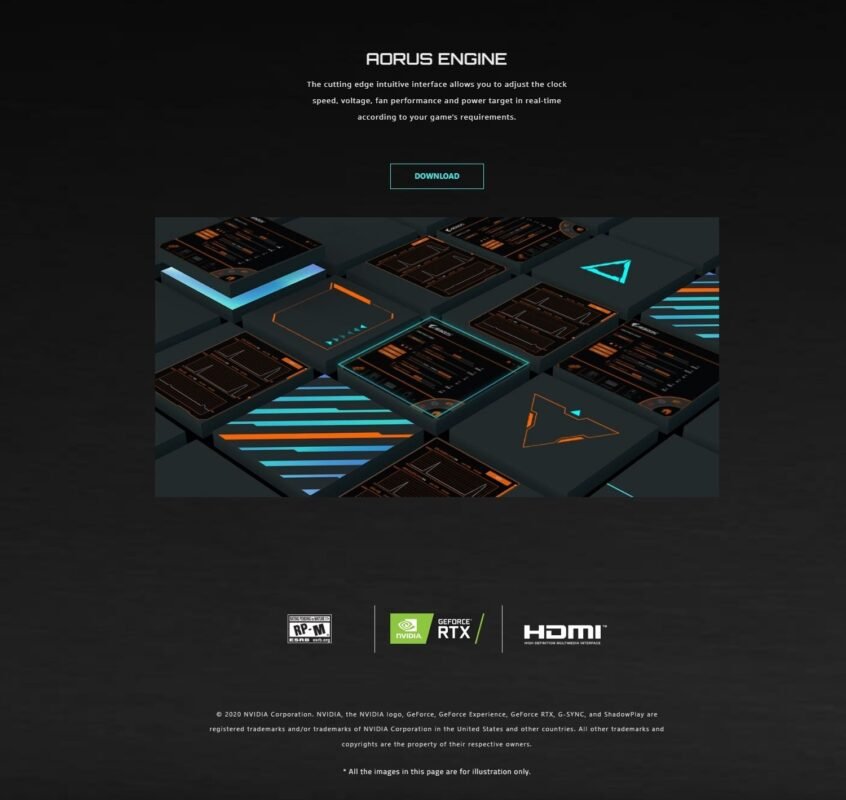
NVLink / Multi-GPU notes.
The card supports NVLink, which allows direct high-bandwidth links between two identical GPUs in workloads and applications that support multi-GPU. Modern games seldom use SLI/NVLink; it’s primarily relevant for specific compute workflows and specialized rendering pipelines.
Cooling and airflow best practices.
- Place intake fans at the front/bottom and exhaust at the rear/top to create directional airflow across the GPU fin stack.
- Maintain at least one case fan pulling cool air directly toward the GPU to avoid recycling heated air.
- For small form factor builds, consider blower-style cards or aggressive case venting; triple-fan cards often require larger chassis.
System integration checklist.
- Measure GPU length and case clearance.
- Confirm PSU wattage and connectors.
- Check motherboard PCIe slot spacing (adjacent M.2, SATA connectors).
- Validate airflow (front intake + rear/top exhaust).
- Confirm CPU pairing to avoid bottleneck.
Integration conclusion.
The GAMING OC is designed for full-sized gaming and workstation builds. Proper system planning — PSU capacity, case airflow, and CPU matching — ensures that the card performs to its potential and that thermals and acoustics remain under control.
12. Comparisons: RTX 3090 vs 3090 Ti, 3080 Ti & AMD Rivals
3090 vs 3090 Ti — raw performance & value.
The 3090 Ti is typically a performance-tier above the 3090, offering higher clocks, increased power draw, and sometimes faster memory. The 3090 GAMING OC narrows the gap through factory tuning, but the 3090 Ti provides additional headroom for extreme users. Value analysis depends on pricing, availability, and whether marginal performance gains justify higher power consumption.
3090 vs 3080 Ti — capacity vs cost trade-off.
The 3080 Ti can approach the 3090’s gaming performance in many titles, but with significantly less VRAM (e.g., 12–16GB depending on model). For gamers only, the 3080 Ti’s price-to-performance often looks better; however, for creators requiring 24GB VRAM, the 3090 remains the preferred option.
AMD incumbents and their positioning.
AMD’s high-end offerings focus on raster performance and raw compute per dollar, but have historically trailed in ray-tracing and AI features compared to NVIDIA’s Ampere stack. For workloads dependent on CUDA or NVIDIA SDKs, AMD alternatives may be less compatible. Pricing, driver maturity, and specific app performance should guide final choices.
Use-case decision matrix.
- Pure gaming (4K): 3080 Ti may offer better value.
- Gaming + Content Creation: 3090 is optimal for VRAM-intensive tasks.
- Compute / Data Science: Choose based on framework support (CUDA vs ROCm) and memory needs.
- Power & efficiency conscious builds: Compare runtime power costs and thermal infrastructure.
Comparison conclusion.
The 3090 GAMING OC occupies a prosumer niche: it is not the strictly best value for pure gaming but is unmatched for VRAM-demanding creative work without stepping up to professional-grade workstation cards. When evaluating alternatives, match the card’s memory and ecosystem strengths to the workload.
13. Buying Guide: Who Should Buy and Value Considerations
Buyer personas and recommendations.
- High-end gamers/streamers: If you play at 4K with ray tracing and want top-tier sustained framerates, the 3090 GAMING OC is a strong choice, especially if you also stream/encode.
- Content creators/3D artists: The 24GB VRAM significantly reduces rendering and editing friction for large projects.
- Researchers/ML practitioners: For smaller-to-medium models and data sets, this card is useful; for extremely large models, consider server-class GPUs or multi-GPU solutions.
Price-to-performance considerations.
Evaluate price relative to the next-best alternatives (3080 Ti, used 3090s, or workstation GPUs). Consider total cost of ownership — including power consumption over expected lifetime and cooling investments. For professionals, the time saved in renders or faster iteration cycles often justifies the premium.
When not to buy.
If your use-case is limited to 1080p/1440p gaming or basic content creation, the cost and power requirements of a 3090 may be disproportionate relative to outcomes. For budget builds, a higher refresh 1440p card often yields better subjective experience per dollar.
Where to buy and warranty checks.
Buy through reputable retailers or authorized resellers and register warranty promptly to take advantage of extended coverage offerings. Compare local warranties and return policies — warranty duration, international coverage, and RMA process impact long-term ownership satisfaction.
Timing and market considerations.
Market fluctuations and new GPU generations can shift value. If a next-gen release is imminent, assess whether improvements justify waiting. However, for urgent workflow needs, current generation cards still provide high capability and proven drivers.
Buying conclusion.
Purchase decisions should be use-case driven: prefer the 3090 GAMING OC for large VRAM requirements and uncompromised 4K workflows; consider alternatives where capacity or power efficiency is the priority.
14. Installation, Troubleshooting & Maintenance
Pre-installation checklist.
- Confirm case clearance and PSU connections.
- Update BIOS and chipset drivers (optional but recommended for new systems).
- Prepare PCIe slot by removing any protective cover and ensuring slot latch is accessible.
Installation steps (practical).
- Power down and unplug system.
- Attach any required power adapters to the GPU (avoid daisy-chaining adapters from single rails).
- Insert into PCIe x16 slot until latch clicks; secure bracket screws.
- Connect display to GPU output (avoid motherboard outputs).
- Power on, install latest drivers and vendor utilities.
Common troubleshooting scenarios.
- No display: Reseat GPU, verify PSU connectors, and test with another display port.
- Boot but no driver: Use DDU (Display Driver Uninstaller) in safe mode to clean previous GPU drivers, then install latest drivers.
- Artifacts or crashes: Lower clocks, check temperatures, and test on another system to isolate hardware vs software.
- High temps: Confirm case airflow, reseat cooler (rare in prebuilt), and verify fan curves.
Maintenance best practices.
- Clean dust using compressed air every 6–12 months depending on environment.
- Monitor temperatures and fan behavior periodically to detect bearing wear or dust-clogged fins.
- Avoid long idle at maximum fan curves; use dynamic curves to reduce wear.
Firmware and driver updates.
Keep GPU drivers and vendor tools updated, especially when new game patches or creative app updates are released. Validate driver release notes for fixes relevant to your workflow before updating in mission-critical environments.
Installation conclusion.
A careful installation with proper power, driver hygiene, and thermal setup ensures the best out-of-box experience. Routine maintenance preserves thermal performance and acoustic levels over the card’s lifecycle.
15. Warranty, Support & Long-Term Reliability
Warranty offering and registration.
GIGABYTE often provides a 3-year standard warranty with an optional 1-year extension upon online registration, effectively offering up to four years of coverage for registered purchasers. Warranty registration and understanding RMA procedures are essential for long-term protection.
Support channels and documentation.
Vendor support includes knowledge base articles, driver download portals, and firmware/utility updates. Use official channels for RMA initiation and follow the specific packaging instructions to avoid delays. Many vendors maintain regional support centers for quicker processing.
Reliability factors — what drives longevity.
- Component quality: High-grade capacitors and chokes reduce failure modes under thermal cycling.
- Cooling efficiency: Lower sustained temps translate to less stress on silicon and capacitors.
- Electrical stability: Clean +12V rails and good PSU selection reduce stress on VRM components.
Field failure modes and mitigation.
Common long-term issues include fan bearing wear and coil whine. Graphene-lubricated fans and robust bearing designs reduce fan-related failures. Coil whine is unpredictable; while not harmful, severe cases sometimes require RMA.
Resale and lifecycle considerations.
High-end cards retain residual value given high performance and VRAM capacity; however, market dynamics shift with new GPU launches. Maintain original packaging and documentation to preserve resale options.
Conclusion
GIGABYTE GeForce RTX 3090 24G Price In Pakistan: We have provided a comprehensive technical and practical appraisal of the GIGABYTE GeForce RTX 3090 GAMING OC 24G, covering architecture, cooling, memory, performance, and ownership considerations. For users who require uncompromising 4K performance, large VRAM capacity, and strong thermal stability — particularly content creators and prosumers — this card is a highly capable choice. Careful system integration, power provisioning, and cooling design are essential to extract sustained performance and ensure long-term reliability.
Frequently Asked Questions (FAQs)
1. What makes the GIGABYTE RTX 3090 GAMING OC 24G different from a reference RTX 3090?
The GAMING OC features factory overclocking, an enhanced WINDFORCE 3X cooling solution, upgraded power delivery, dual BIOS, RGB Fusion control, and often higher sustained boost clocks due to improved thermal headroom and factory tuning.
2. Is 24GB of VRAM necessary for gaming?
For most current games at 1080p or 1440p, 24GB is overprovisioned. It becomes valuable at 4K/8K settings with high-resolution textures, or for content creators and professional workflows that require large GPU memory buffers.
3. Will this card fit in a standard mid-tower case?
Physical dimensions can vary by vendor model; the GAMING OC is typically long and 2.5–3 slots thick. Confirm case GPU clearance and internal layout before purchase to ensure compatibility. (Refer to product dimensions on vendor spec pages.)
4. Can the card be overclocked safely with stock cooling?
Yes — the card’s robust cooling and power delivery support conservative overclocks. Use incremental changes, monitor temperature and stability, and do not exceed recommended voltages to preserve lifespan. Dual BIOS provides a safety fallback.
5. How long is the warranty, and how do I register?
GIGABYTE typically provides a standard multi-year warranty with the option to extend coverage (up to 4 years total) through online product registration within the vendor-defined registration window. Check the official product page and registration portal for specific steps and regional terms.
GIGABYTE GeForce RTX 3090 24G Price In Pakistan – Limited Offer
Direct Order to PPG Buy & Sell Admin
Product Specifications
| GPU | NVIDIA GeForce RTX 3090 |
|---|---|
| CUDA Cores | 10,496 |
| Boost Clock | 1,755 MHz (OC) |
| Memory | 24 GB GDDR6X, 384-bit, 19.5 Gbps |
| Memory Bandwidth | 936 GB/s |
| Interface | PCIe 4.0 x16 |
| Display Outputs | 3× DisplayPort 1.4a, 2× HDMI 2.1 |
| Max Resolution | 8K @ 60 Hz |
| SLI Support | 2-way NVLink |
| Cooling | WINDFORCE 3X (2×90 mm + 1×80 mm fans, alternate spinning, Screen Cooling, large copper heat pipes) |
| Features | RGB Fusion 2.0, Metal Backplate, Dual BIOS, 4-Year Warranty (w/ registration), NVLink, Durability-enhanced PCB |
| Power Connectors | 2× 8-pin PCIe |
| TDP | 350 W |
| Recommended PSU | 750 W |
| Dimensions | ~320 × 129 × 57 mm (L×H×W), 3-slot width |
| Brand |
Gigabyte |
|---|


MAECENAS IACULIS
Vestibulum curae torquent diam diam commodo parturient penatibus nunc dui adipiscing convallis bulum parturient suspendisse parturient a.Parturient in parturient scelerisque nibh lectus quam a natoque adipiscing a vestibulum hendrerit et pharetra fames nunc natoque dui.
ADIPISCING CONVALLIS BULUM
- Vestibulum penatibus nunc dui adipiscing convallis bulum parturient suspendisse.
- Abitur parturient praesent lectus quam a natoque adipiscing a vestibulum hendre.
- Diam parturient dictumst parturient scelerisque nibh lectus.
Scelerisque adipiscing bibendum sem vestibulum et in a a a purus lectus faucibus lobortis tincidunt purus lectus nisl class eros.Condimentum a et ullamcorper dictumst mus et tristique elementum nam inceptos hac parturient scelerisque vestibulum amet elit ut volutpat.
Related products
Henectus tincidunt
MSI GeForce RTX 5060 Ti 16G VENTUS 2X PLUS Graphic Card Price in Pakistan – Limited Offer
MSI GeForce RTX 5060 Ti 16G Ventus 2X Plus — Key Specs
- GPU Architecture: NVIDIA Blackwell
- CUDA Cores: 4608
- Memory: 16GB GDDR7, 28 Gbps, 128-bit bus
- Boost Clock: Up to 2587 MHz (Extreme Performance via MSI Center)
- Ray Tracing Cores: 4th Gen RT
- Tensor Cores: 5th Gen (DLSS 4 support)
- Power Consumption (TDP): ~180 W
- Power Connector: 1× 8-pin PCIe
- Recommended PSU: 600 W
- Interface: PCI Express Gen 5.0 ×16
- Outputs: 3× DisplayPort 1.4a, 1× HDMI 2.1a (HDCP 2.3, up to 4 displays)
- Encoder/Decoder: 9th Gen NVENC with AV1 support
- Dimensions: 227 × 126 × 41 mm
- Slot Size: Dual-slot design
- Cooling: Dual-fan (MSI Ventus 2X Plus)
MSI GeForce RTX 5060 Ti VENTUS 2X 8G OC PLUS Graphics Card Price in Pakistan – Limited Offer
- Powered by the NVIDIA Blackwell architecture and DLSS 4
- Core Clock: Extreme Performance: 2617 MHz (MSI Center)
- Boost: 2602 MHz
- STORMFORCE FAN: Seven fan blades, claw texturing, and a circular arc are designed for optimal airflow with minimal noise.
- Heat Pipes are designed for efficient heat transfer; they effectively draw thermal energy away from the GPU, improving overall cooling performance.
- Reinforcing Backplate: The reinforcing backplate features an airflow vent that allows exhaust air to directly pass through.
- MSI Center: The exclusive MSI Center software lets you monitor, tweak, and optimize MSI products in real-time.
- Afterburner software takes full control with the most recognized and widely used graphics card overclocking software in the world.
MSI GeForce RTX 5060 VENTUS 2X 8G OC WHITE Graphics Card Price in Pakistan – Limited Offer
- Powered by the NVIDIA Blackwell architecture and DLSS 4
- Core Clocks: Extreme Performance: 2535 MHz (MSI Centre)
- Boost: 2527 MHz
- TORX Fan 5.0: Fan blades linked by ring arcs work to stabilise and maintain high-pressure airflow.
- Heat Pipes are designed for efficient heat transfer; they effectively draw thermal energy away from the GPU, improving overall cooling performance.
- Reinforcing Backplate: The reinforcing backplate features an airflow vent that allows exhaust air to directly pass through.
- MSI Centre: The exclusive MSI Centre software lets you monitor, tweak and optimise MSI products in real-time.
- Afterburner software takes full control with the most recognised and widely used graphics card overclocking software in the world.
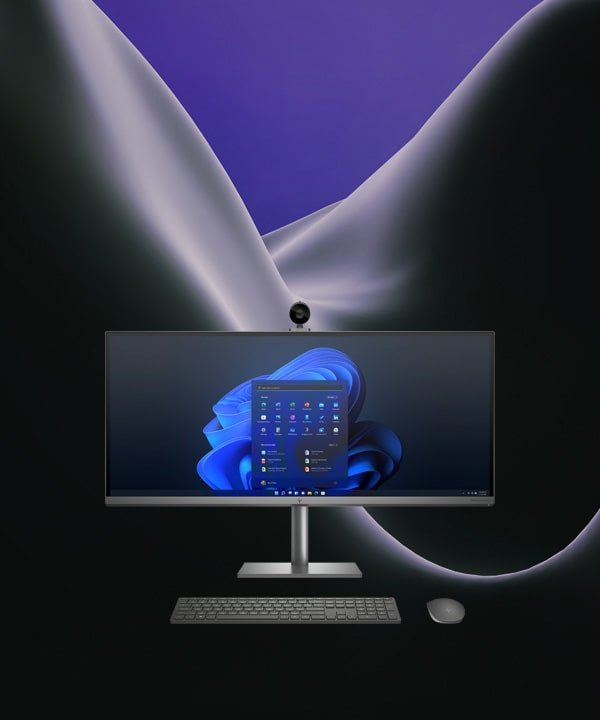
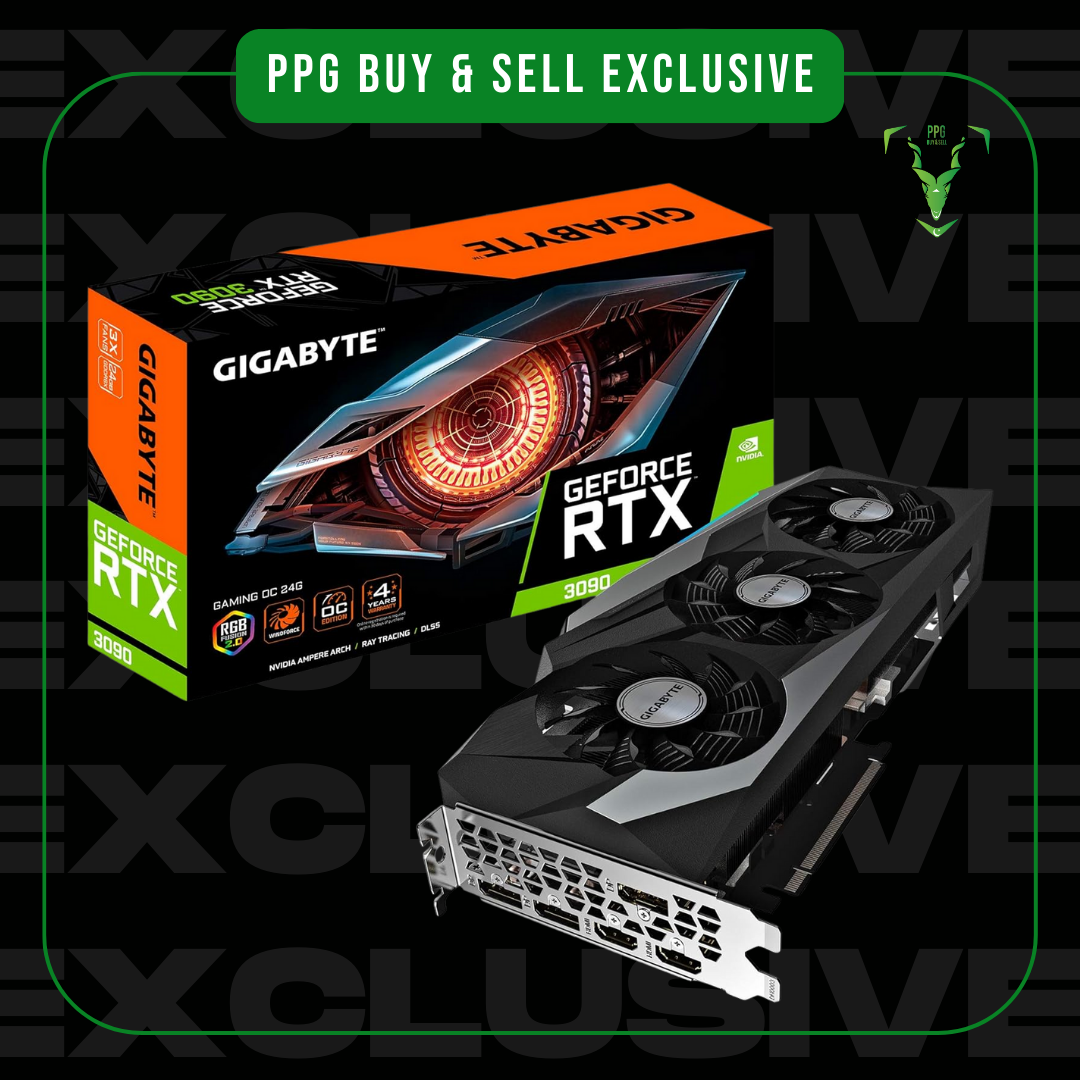


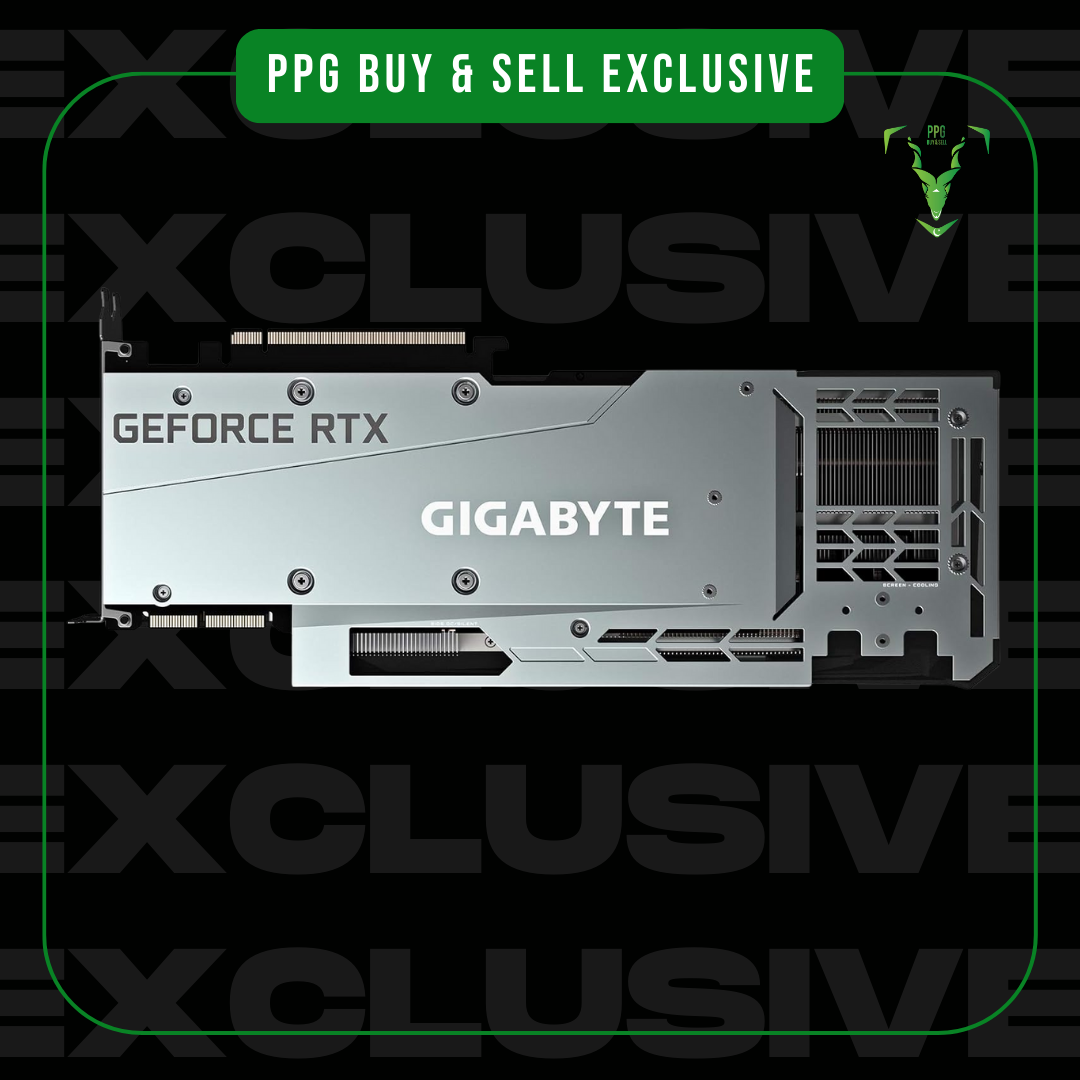

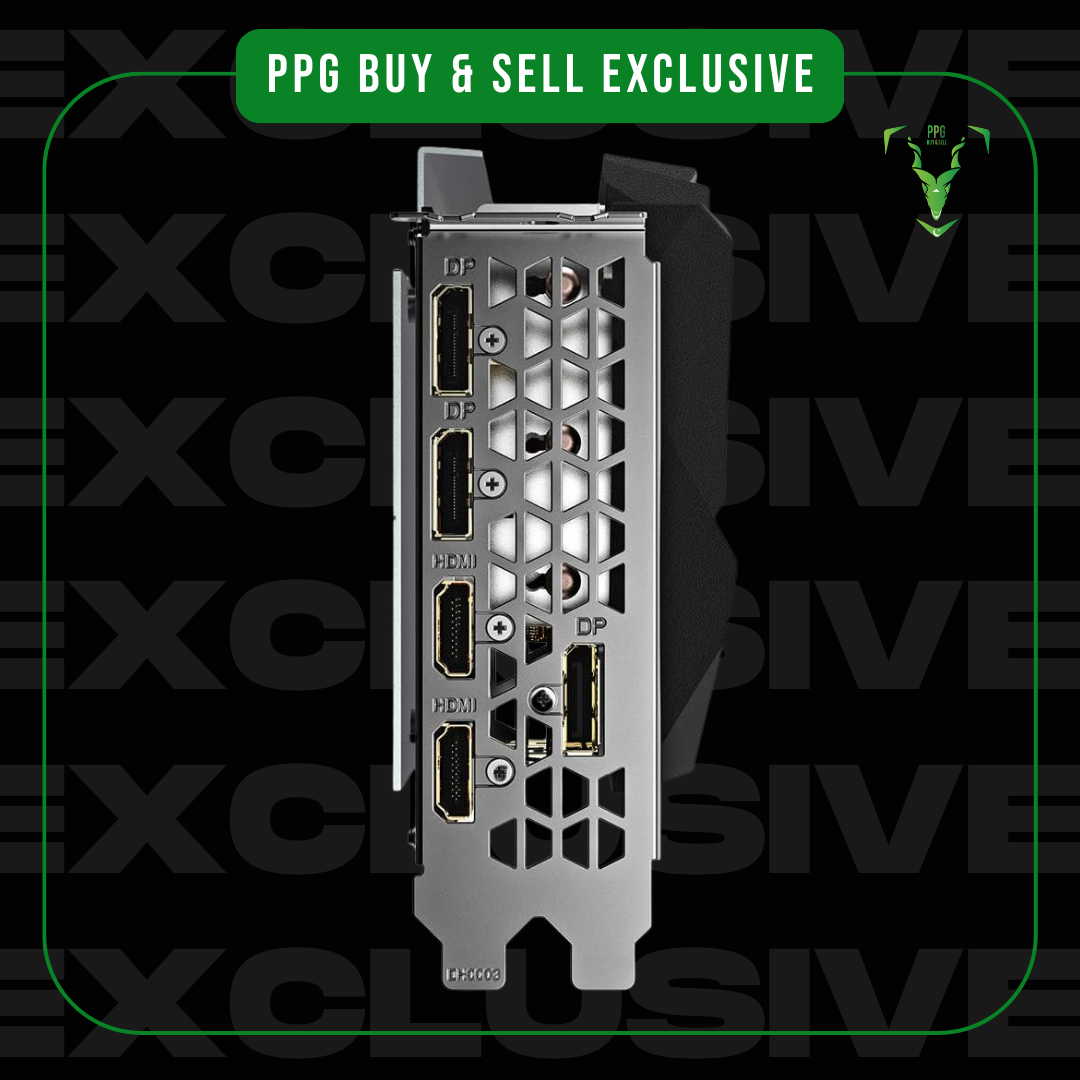






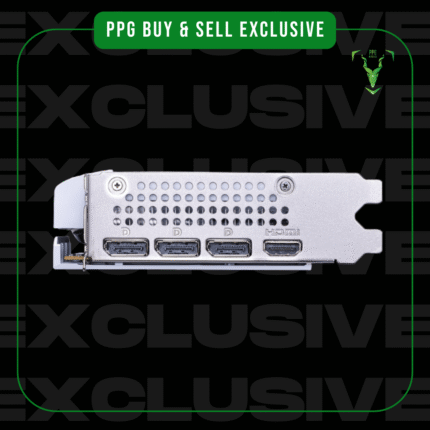









Reviews
There are no reviews yet.